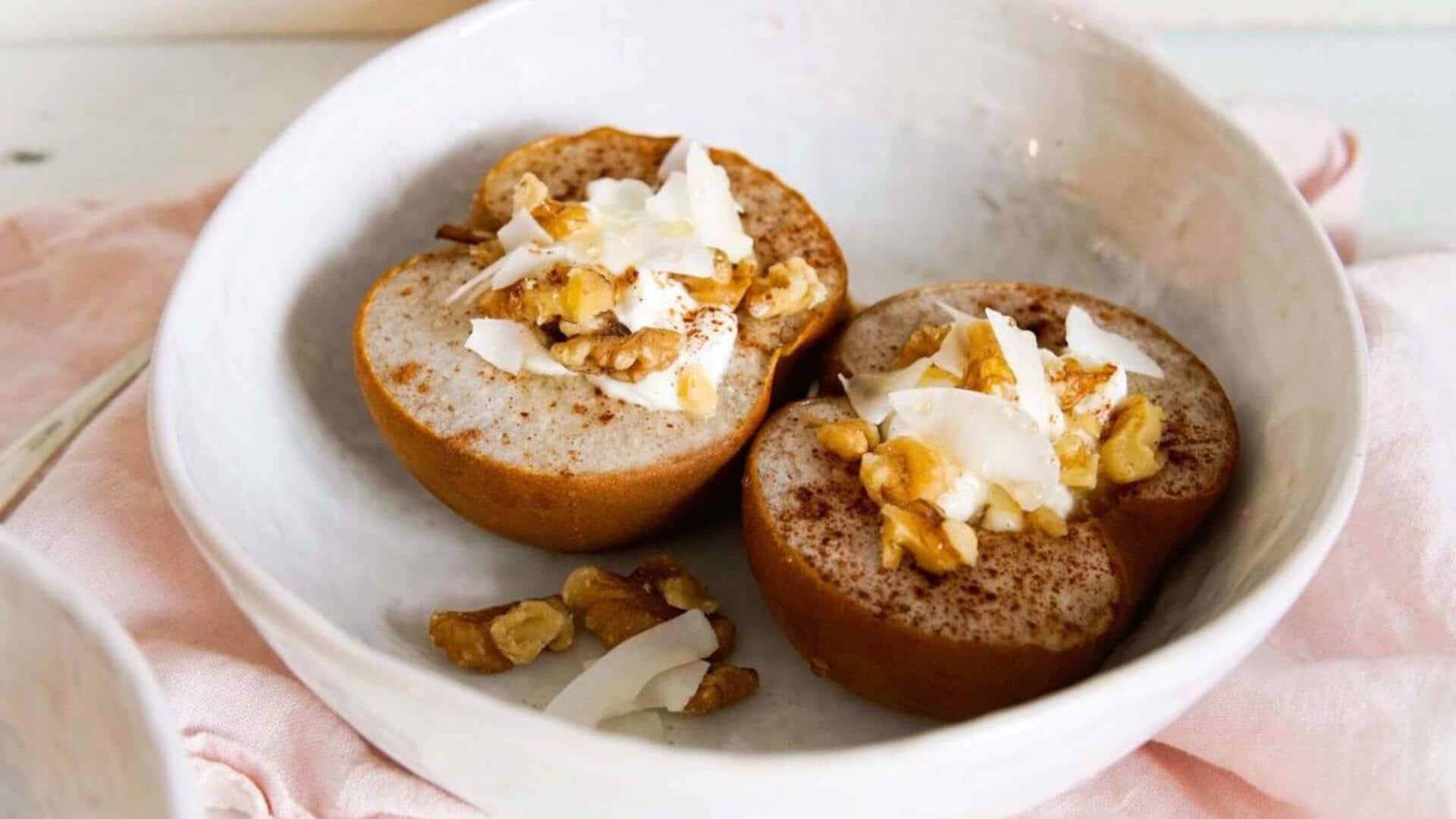
Ever tried nashi pears for desserts? You'll love them
What's the story
Munching on nashi pears, or Asian pears as they're commonly called, is an absolute delight. These crisp, sweet fruits make for the perfect guilt-free dessert. With high water content and low calories, nashi pears are a refreshing reprieve from regular dessert ingredients. Raw or cooked, nashi pears can be used in a range of recipes. Here's how nashi pears can change your dessert game.
Health perks
Nutritional benefits of Nashi pears
Packed with essential nutrients, nashi pears make an ideal choice for health-conscious individuals. They are rich in dietary fiber, which helps in digestion and maintaining a healthy weight by keeping you full. They also contain vitamin C and potassium, which further add to your overall well-being by supporting immune function and heart health. With only around 50 calories per pear, they offer a guilt-free way to satisfy your sweet tooth.
Culinary uses
Versatile dessert ingredient
The unique texture of nashi pears makes them suitable for various culinary applications. Their crispness holds up well in salads and fruit bowls, adding a refreshing crunch. When baked or poached, they become tender while retaining their natural sweetness—perfect for pies or tarts without the need for added sugar. Their subtle flavor pairs well with spices like cinnamon or nutmeg, enhancing the taste of any dessert creation.
Simple creations
Easy recipes with nashi pears
Creating desserts with nashi pears is easy and rewarding. For a quick treat, slice the pear thinly, drizzle it with honey or maple syrup, and bake until golden brown. Or dice the pear into small cubes and mix it into yogurt or oatmeal for a nutritious breakfast option that feels indulgent yet healthy. These simple recipes highlight nashi pears' natural sweetness without overpowering other flavors.
Choosing wisely
Tips for selecting ripe Nashi pears
Selecting ripe nashi pears ensure that you get the best flavor and texture from your fruit-based desserts. Look for firm fruits with smooth skin free from blemishes or bruises; this is a sign of freshness and quality. A ripe nashi pear should have a slight give when gently pressed but not too soft—this balance ensures optimal taste when used in recipes either raw or cooked.